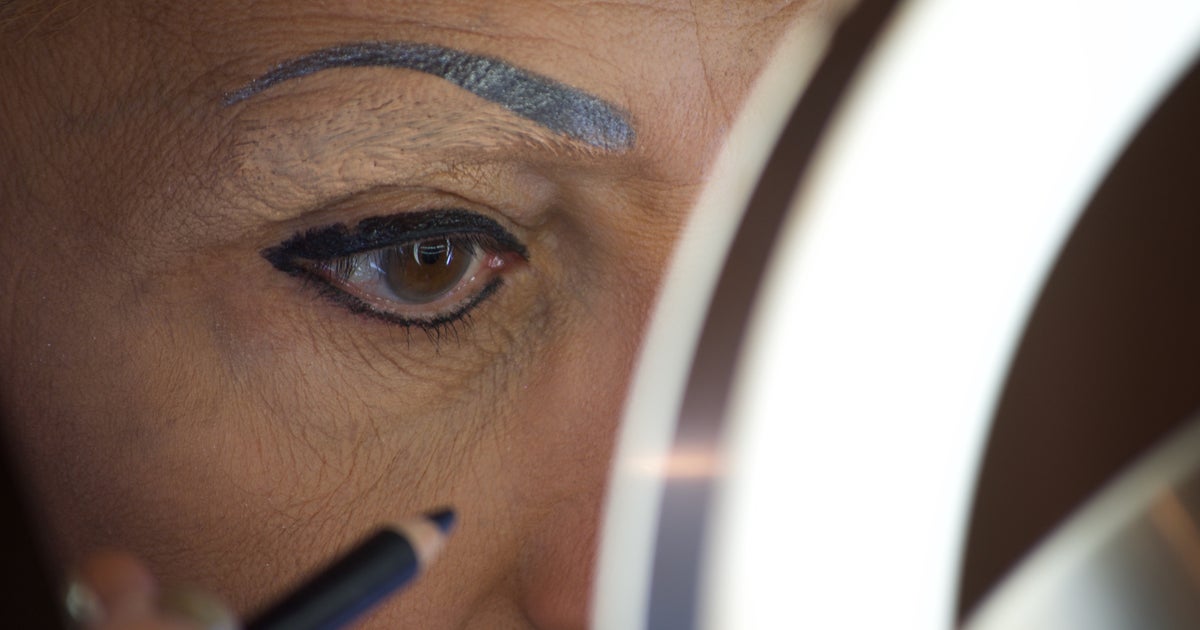
Tales Of An Aging Drag Queen
HuffPost
Get ready with a 74-year-old drag performer who's still got it — and won't be retiring anytime soon.
On any given Thursday, around 6 p.m., John Sefakis starts his weekly transformation into Stella D’oro, his drag persona. Facing three lighted mirrors and in front of a bouquet of bright, plastic flowers, the 74-year-old Greek American slicks down his thin, dark eyebrows with a glue stick, making sure that every hair is laid flat. On this particular night, he is performing at the Barracuda Lounge, a gay bar in New York City’s Chelsea neighborhood, he tells me as I stand next to a living room table, now transformed into an improvised vanity.
Every year that passes, getting into drag becomes more arduous. Even with stencils, Sefakis struggles to design the eyebrows. “I gotta make sure that they’re sort of even,” he says. “Some people paint them in. I have no arm for painting.” His naturally aging skin also makes the process more complex; while applying powder to get a smoother appearance, he needs to avoid the skin around his eyes. “I see what the queens do on ‘[RuPaul’s] Drag Race’ when they make up. They are so severe because they don’t have any wrinkles,” he says. “Which I can’t do because I’d be Wrinkle City.”
At a certain age, many drag queens hang up their heels for good, leaving the stage to the next generation — artists who meet audiences’ demands for acrobatic moves such as death drops. “Now that drag queens are expected to perform ball moves like duck walks and dips, there’s this valorization of the really agile body,” says Kareem Khubchandani, an associate professor of theater, dance and performance studies at Tufts University who is also the author of “Decolonize Drag” and a drag performer under the name LaWhore Vagistan.
Not so for Sefakis, who, along with a cohort of elder queens, is not planning to retire anytime soon. Staying in the game, however, isn’t easy. Routines must be altered to accommodate the aches and pains of aging, especially for older queens who manage underlying medical conditions. The lack of a solid economic safety net due to a reliance on tips also affects mature drag queens’ well-being. And with states like Tennessee adopting anti-drag legislation and drag performers getting death threats, this “form of entertainment [and] performance practice used for protests and education,” as Khubchandani defines it, is in jeopardy.
Moreover, pop culture — and the queer community at large — prioritize younger performers by far. Out of the more than 200 contestants across 16 seasons of “RuPaul’s Drag Race,” only eight were 40 or older when they participated. “In the gay community, if you’re over 30, you’re dead,” says Charlie Hides, 59, the oldest contestant to ever appear on “Drag Race,” in a video interview from the U.K. “Basically, I’ve been dead for 30 years.” Hides, who famously cracked a rib during the competition, has had to make art and costuming adjustments over time. “I was known in England for climbing up on top of the speakers and jumping off the bar wearing 9-inch heels, and I’m a little more careful these days,” she says.











